How has camera technology changed in the last two decades?

Twenty years is a long time in technology. In the past two decades, there have been a number of generational developments in technological capabilities. Whether it be in terms of manufacturing or in terms of computational power, image creation has grown faster in the last 20 years than it had in the preceding 200 years.
Let’s take a look at some of the key products that have transformed the way that we create images and capture video…
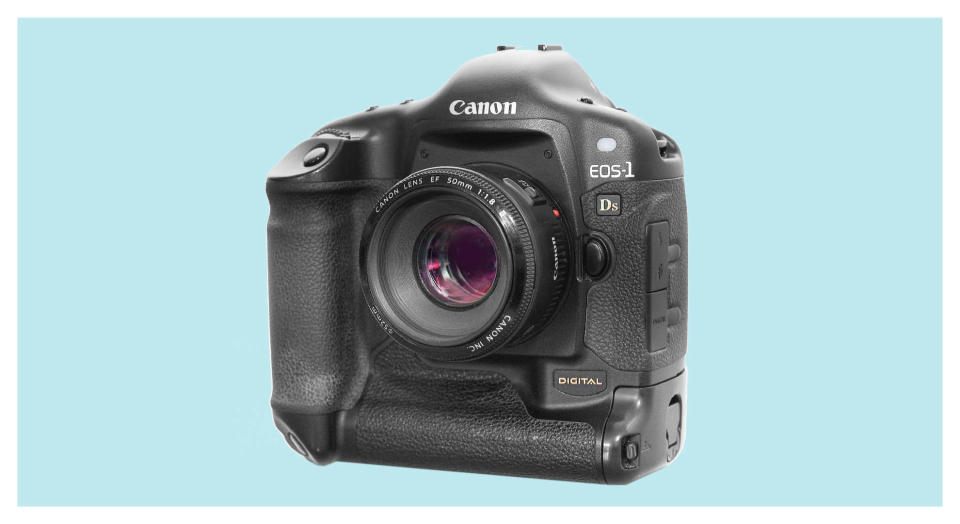
The early years of professional digital cameras were dominated by models aimed at press photographers, almost exclusively made by Canon and Nikon.
2002 saw the release of Canon’s EOS 1D-s, which was the company’s first ever full-frame DSLR. It was built like a tank and along with the Nikon D1, which came out three years earlier in 1999, it became the template for what professional sports and press photographers would come to expect from pro cameras for the decades that followed.
Back then, a professional camera with an 11.1-megapixel sensor and 3 fps continuous shooting was a revolution. The 1D-s was one of the first major steps in digital photography that made the strongest case yet for professionals to switch from film to a digital camera.
While Canon pushed boundaries with full-frame and resolution, Nikon initially focused on speed with the Nikon D2H in 2003. It had a 4.1MP APS-C sensor made by Sony, but it could shoot at 8fps, matching the lower resolution Canon 1D, which had come out in 2001.
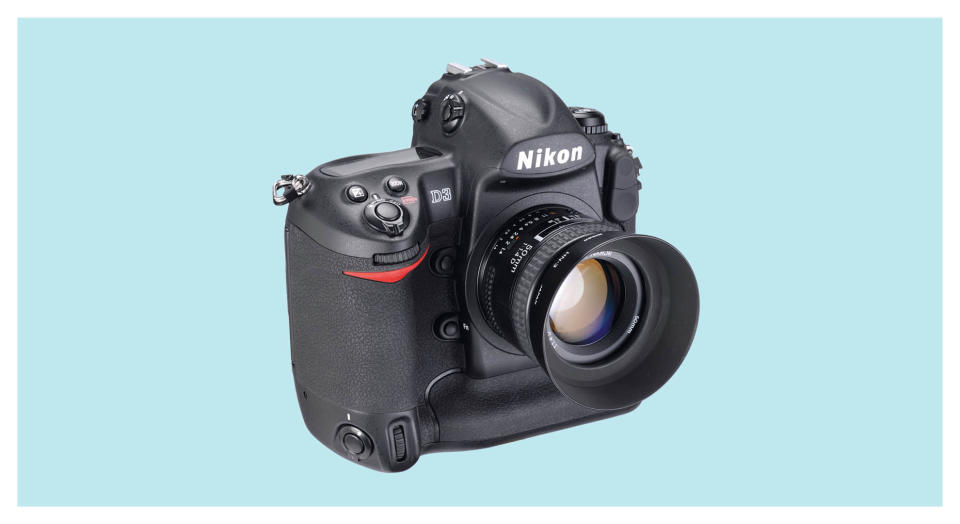
However, Nikon failed to join the full-frame bandwagon until 2007, when it released the iconic Nikon D3. Being so late to release a full-frame DSLR is arguably a huge misstep that the company is still paying for today.
2003 also saw the release of Adobe Camera RAW, which for the first time, allowed photographers to easily edit and convert RAW image files. The creation of Adobe Digital Negative (Adobe DNG) and Camera RAW allowed the industry to converge on a RAW format and conversion platform that would effectively be permanently accessible, even if one of the companies were to go out of business.
Of course many companies still have their own proprietary RAW formats, but many conversion tools have been released since the launch of Camera RAW, keeping the editing capabilities of RAW files accessible for free.
While DSLR cameras were finding their feet and were still out of reach for the average consumer, the early to mid-2000s were awash with compact (pocket) digital cameras, which were low-cost and easy to produce en masse. Canon did introduce the Digital Rebel (aka EOS 300D) in 2003, with the now staple EF-S 18-55mm kit lens, which was the first DSLR that could be purchased for around £1,000. But for a large part of that decade, compact cameras were the money-makers for the industry.

Olympus, Panasonic, Fujifilm, Canon, Nikon and Sony all made hay while the sun was shining on simple-point and shoot models. But in 2007, on January 9th, Steve Jobs took to the stage at the MacWorld Expo and revealed the very first iPhone.
iPhone was the Apple’s first foray into the world of mobile phones with its humble 2MP sensor and 16GB of onboard storage. iPhone wasn’t the first phone with a camera; Kyocera, Sharp, Samsung, Nokia and Sony Ericsson had already begun forging that path.
However, the power of the “Apple Effect” officially triggered the starting gun for a burgeoning smartphone industry and spelled the beginning of the end for compact cameras as the inevitable tide of mobile phones with cameras followed in its wake.
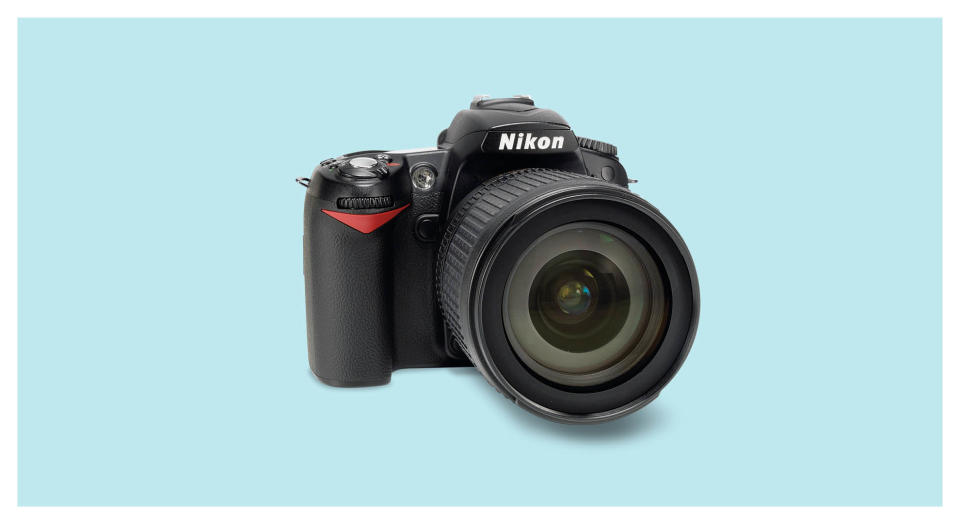
In 2008 the mega-popular Nikon D90 became the first DSLR to offer video recording capabilities, but a month or so later, Canon released the EOS 5D Mark II, which raised the bar to FullHD video.
The quality of the EOS 5D Mark II was so good that it was quickly adopted by professionals in the TV and film industries, as a B-cam and crash cam for blockbuster movies such as Iron Man 2 and shows like House. Building on the success of the original EOS 5D, the Mark II was also hugely popular among landscape, portrait and wedding photographers.
2008 was a pivotal year for camera tech. As well as being the first year video was introduced to DSLRs, laying the foundations for the hybridisation of cameras to come, it was also the year that Panasonic revealed the Lumix G1 at Photokina in Cologne. It was the world’s first mirrorless interchangeable lens camera.
This year also marked the launch of the Micro Four Thirds mount, co-developed between Panasonic and Olympus. This new open standard for lenses opened the door for third party lens manufacturers and some of the most significant camera bodies ever released, including the pioneering GH family of LUMIX cameras, the digital resurgence of Olympus’ OM-D brand and BlackMagic Design’s first steps into camera production.
Micro Four Thirds, despite having a much smaller sensor at the heart of its system, offered a genuine high-quality alternative to DSLRs for prosumer and professional photographers who wanted to downsize their kit bag. The smaller M43 sensor may have had some disadvantages in terms of low-light capabilities and producing dramatic background blur compared to full-frame DSLRs, but it also allowed the system to innovate in other areas. For example, the G1 also allowed for full-time live preview of the scene when composing images.

Sony had been making a solid contribution to the development of the digital camera world as one of its most prolific sensor manufacturers, but it had yet to find its stride with an interchangeable lens camera system of its own.
In 2010, Sony hedged its bets with two different approaches to solving the problem of mirrors in DSLR cameras. The first approach was the development of the Sony SLT camera, sporting the Minolta A-mount.
Sony SLT cameras had a semi-transparent fixed mirror in front of the sensor, which diverted some light to a phase detection autofocus sensor, while the rest of the light hit the imaging sensor. The advantage of this approach is that it allowed for full-time phase-detection AF, which offered a great advantage when capturing fast-moving subjects, as well as constant live view and video recording.
At the same time, Sony introduced the super-compact mirrorless NEX E-mount cameras, which initially used contrast-based AF. The absence of a mirror box allowed for third-party lens adapter companies to take advantage of the short distance between the mount and the sensor.
This saw a wave of vintage lenses being adapted and used on Sony’s exciting new E-mount system. E-mount would eventually prove the more popular approach and Sony ceased production of the Sony SLT cameras a few years later.
A little known social media app by the name of Instagram was also launched in 2010… I wonder whatever happened to it?

DSLR cameras were still selling well; despite the wave of new alternatives springing up around them, they were still consistently more popular among professionals.
Canon announced the Canon EOS-1D X at the end of 2011, hoping to entice photographers planning to cover the London 2012 Olympics. It was an 18MP full-frame speed demon, capable of capturing up to 12fps RAW+JPEG. Olympus’ OM-D revival gained traction with the release of the multi-award winning OM-D E-M5, which was the first stills camera to market with 5-Axis in-body image stabilisation.
Around the same time, Sony was beginning what would be a relentless run of camera releases in all segments, including compacts, premium compacts, interchangeable lens and mirrorless.
Sony’s RX range of premium compact cameras was released in 2012, with its large-sensor line promising to compete with DSLRs in terms of image quality, despite being pocket-sized. The Sony RX1 was the world’s first full-frame compact camera, with a 24.3MP sensor and a fixed 35mm f/2 Zeiss lens.
Following on the RX1’s heels in 2013, the cult classic Ricoh GR hit the market with an APS-C sensor. This new class of large sensor compact camera would prove to have enduring popularity among street and documentary photographers, due to its supreme balance between portability, image quality and inconspicuity.

DSLRs were still holding their ground, at least among photographers, with the Nikon D810 setting a new benchmark for technical performance and image quality.
The D810 had a 36.3MP full-frame CMOS sensor, without an Anti-Aliasing filter, which delivered tack-sharp images. In terms of video, it offered 1080/60p video, with a built-in stereo microphone.
You could also record to a memory card while outputting uncompressed video over HDMI. But ultimately, DSLR cameras were already being thoroughly trumped by mirrorless at this point.
The Fujifilm X-T1 was the company’s boldest entry into the mirrorless segment at the time of its introduction in 2014. The APS-C model had a 16MP X-Trans CMOS II sensor, weather sealing, 1080/60p video, built-in Wi-Fi, tilting LCD and 8fps continuous shooting with AF-C. Its combination of retro-styling and modern capabilities made the X-T1 an instant classic.
2014 was another key year for video capabilities in the camera world, as it was also the year that GoPro launched its first serious action camera, the GoPro HERO3+ with 4K-video recording and 12MP stills. The growing class of action cameras gave people a reason to go out and do the kinds of activities that people typically photographed and filmed other people doing.
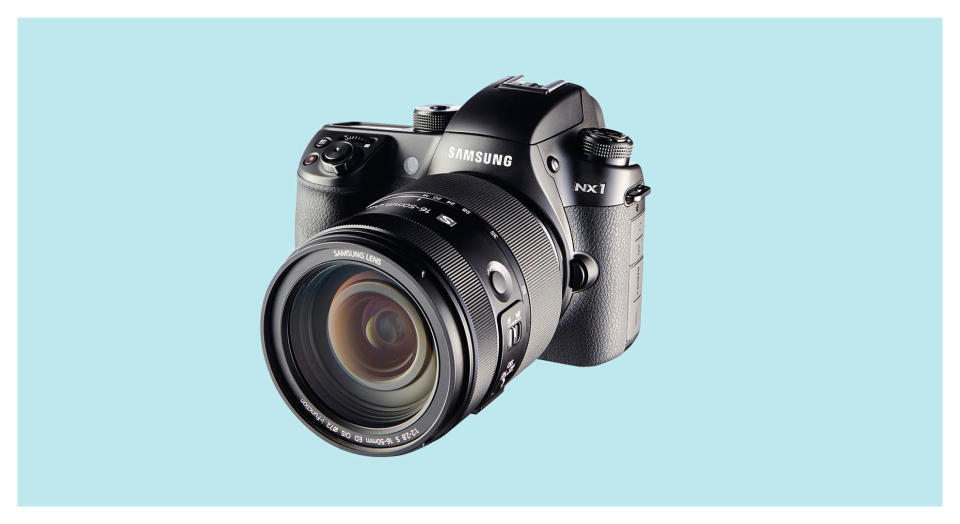
2014 saw the release of the Lumix GH4 as well, the first mirrorless camera capable of recording 4K-video. Just like the A7S, it targeted a TV and Film production audience, as well as prosumer creators. The GH4 also introduced 4K-photo mode, which essentially gave creators bursts of 30 fps to pull 8MP stills from.
Panasonic also dabbled with creating a smartphone, the Lumix DMC-CM1, a mobile with a 20MP 1-inch sensor, RAW image capture and 4K/15p video. The CM1 was an amazingly innovative product that could have truly bridged the gap between smartphone and camera at a time when smartphones had begun to decimate the compact camera market. It was well ahead of its time, but unfortunately due to cost and strategy, it didn’t take off.
Speaking of “ahead of its time”, Samsung had also been exploring the development of its own mirrorless system cameras and smartphone hybrids under the NX and Galaxy brands, with varying degrees of success.
Samsung peaked with the Samsung NX1, an insanely capable camera that had a 28.2MP APS-C sensor, 15 fps burst-mode shooting, hybrid AF, weather sealing and 4K/30p H.265 internally, as well as 4:2:2 8-bit 4K video over HDMI.
Announced in 2014, the Samsung NX1’s spec sheet still looks relatively impressive today. Samsung never officially discontinued production of its NX cameras, but these cameras have been listed as “out of stock” since 2016.
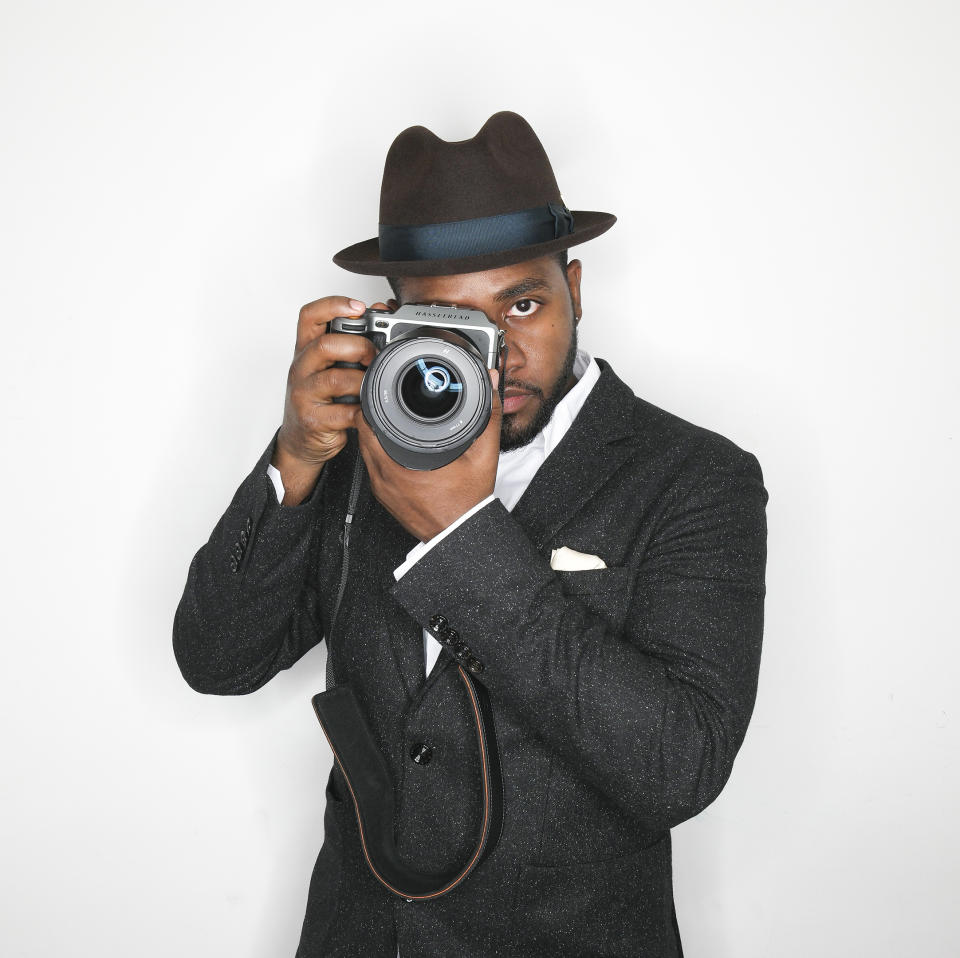
Hasselblad sparked a new class of camera with the release of the Hasselblad X1D in 2016, the world’s first mirrorless medium format system body. Following its release, the X1D-50C’s sensor was rated as the best commercially available medium format sensor by imaging experts DXO Mark, a position it still holds to this day.
DJI, who now owns Hasselblad, released its first-ever compact foldable drone, the Mavic Pro, also in 2016. With 4K/24p video and 12MP stills, the Mavic Pro defined an entirely new category of consumer drone with photography and video capabilities, all but eliminating the barrier to entry for would-be aerial photographers.
The Lumix brand continued its habit of pioneering video capabilities when it released the Lumix GH5 in 2017, the world’s first mirrorless camera capable of 4K/60p video. Not only was it pushing the limits of hybrid camera video resolution and frame rates, it also set a new standard for in-body image stabilization with its class-leading IBIS.
By this point, many of us were wondering why Canon and Nikon were still not taking mirrorless cameras seriously, with both dabbling with small sensor interchangeable mirrorless bodies that were never seriously going to make a mark. Both camera giants resisted cannibalizing their DSLR businesses until the moment that it was inevitable.
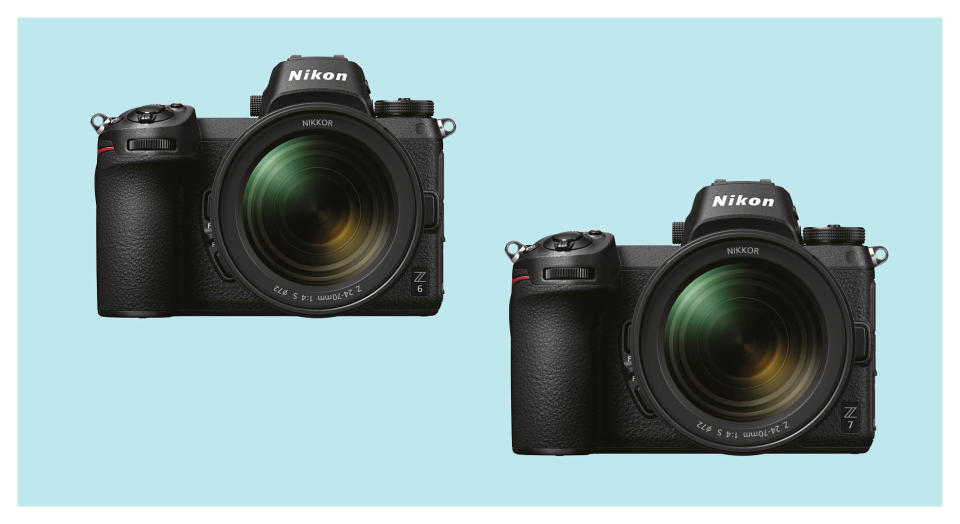
Medium format came to the masses in the form of the Fujifilm GFX 50S in 2017. The GFX followed in the X1D’s footsteps, using a mirrorless design to bring down the size of medium format. But Fujifilm also managed to significantly lower the starting price point for medium format, making it far more accessible to professional and experienced amateur photographers alike.
Another significant mobile device came to prominence in 2017; the Google Pixel 2. Instead of deploying multiple camera modules to keep up with the trend of the time, Google stuck with a single camera and utilised its extensive image library, courtesy of its free Google Photos App and Google Images tool, to develop a superior image processing algorithm, based on complex machine learning.
Due to its advanced AI-capabilities Google’s Pixel device was able to set the bar for computational photography and outshoot rival mobile camera systems with superior hardware, on paper.
Meanwhile, in the dedicated camera world, it wasn’t until 2018 that Canon and Nikon finally released their first serious mirrorless cameras, in the form of the Canon EOS R and the Nikon Z6 and Nikon Z7. Each new system of mirrorless camera ushered in entirely new lens mounts, signalling the official beginning of the end for DSLR cameras.
Finally, in 2021 Canon conceded that it would have to start winding down DSLR camera production, followed by Nikon in 2022. Mirrorless won the battle in a more comprehensive way than digital beat film photography.
Many would argue film formats still have a look and feel that can’t be replaced, giving the medium enduring relevance. But mirrorless cameras offer practically every advantage imaginable over a DSLR today.
What will digital imaging look like in 2042?
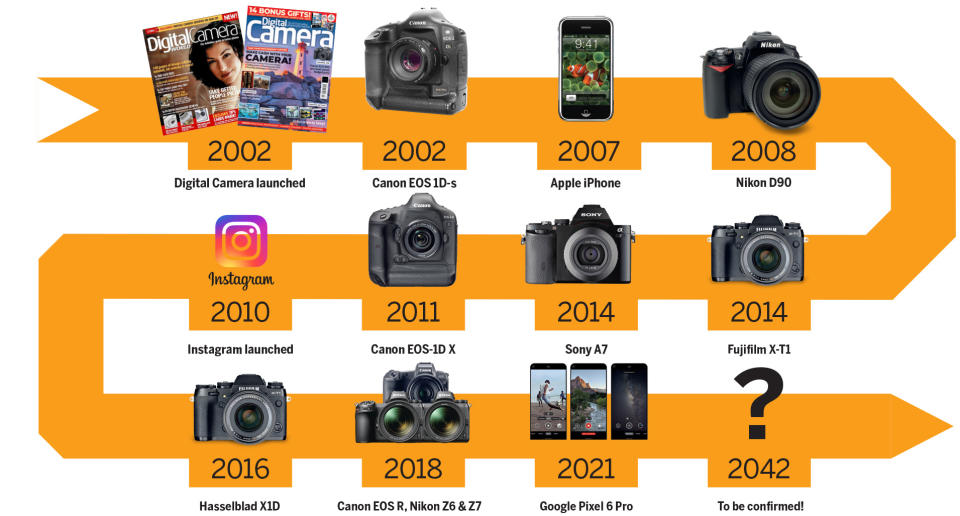
So is that all there is to it after 20 years of technological advances? We all went mirrorless. The end? Most definitely not.
The trifecta of the global pandemic of 2020, an unprecedented semiconductor shortage and leaps in artificial intelligence have accelerated the rise of previously unimaginable computational photography and AI image generation tools.
With many limitations being approached in terms of physics for camera hardware, software is where the real advancements are coming, thick and fast.
Cameras are getting smarter, which is making professional-looking results much easier for the average person to achieve. But AI-image generation is taking things a step further, removing the need for cameras (and models) all together.
Using text-based image prompts, we’re able to generate unique photorealistic images of people, places and objects that don’t exist in the real world. Still in its infancy, the leaps and bounds that AI-image creation has made in the past year alone have been generational in terms of fidelity.

As was the case with film when digital came along, and DSLRs when mirrorless came along, and the whole dedicated camera world when smartphones came along, there’s outcry from some corners of the creative worlds.
Portfolio and creative networking website PurplePort recently banned 100% “machine-generated images” in a bid to protect “human generated and human-focused art”. The concern among some creatives is that AI-image creation could destroy the need for photographers and artists altogether.
Do I agree? No. Of course, things being shaken up at a fundamental level will mean some people will get left behind. But with new tools, comes new opportunities. Learning to “talk” to AI, in order to communicate a coherent and compelling vision, is a skill in and of itself, one that takes time to develop.
Photographers, artists and creatives in general are already equipped with a fluent visual vocabulary that is key to unlocking the potential for AI image generation. And when you throw in the ability to go out and capture specific visual elements to feed into an AI-image generation model, again, we have an advantage there too.
Creativity is something that is in you, it’s not something that you can buy off the shelf. It takes years of explored curiosity and the consistent sharpening of tools to develop.
If you’ve put in the time at some point during the past 20 years and you carry on for the next, I’m excited for what you and I will be creating in 2042.

Digital Camera World is the world’s favorite photography magazine and is packed with the latest news, reviews, tutorials, expert buying advice, tips and inspiring images. Plus, every issue comes with a selection of bonus gifts of interest to photographers of all abilities.
Subscribe now – click here to see our best deal! View Deal
Read more:
The best camera in 2022
The best camera phone in 2022
The best camera drones in 2022

